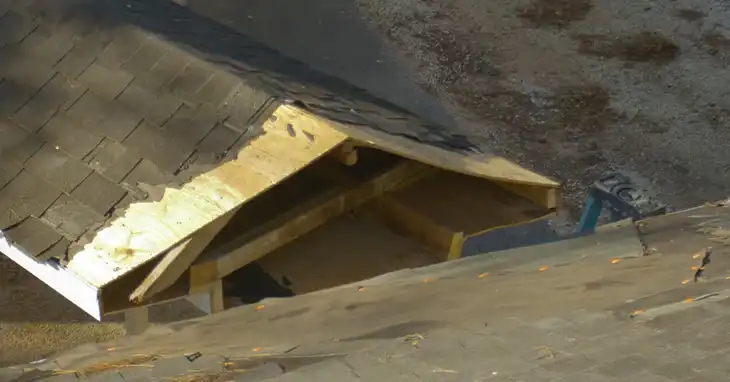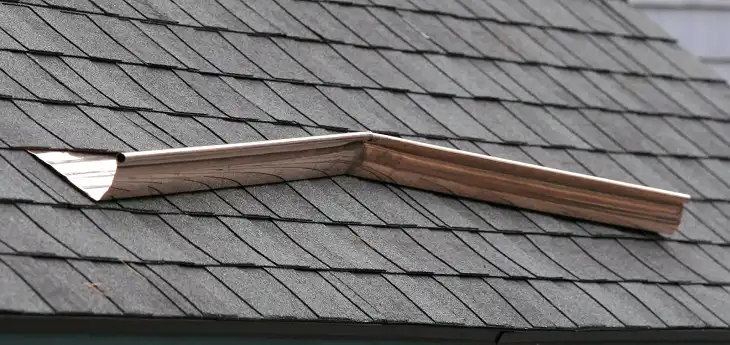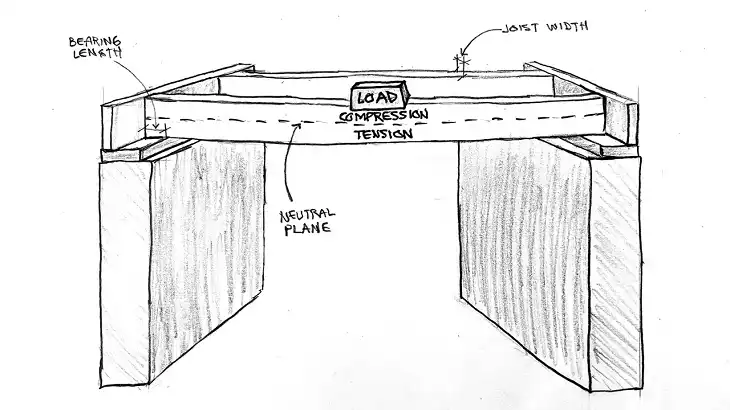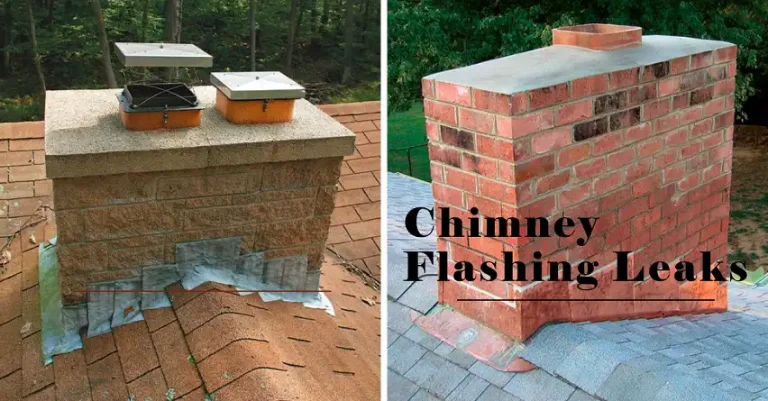How to Cut Metal Roofing with Tin Snips?
As a homeowner, you may find yourself in a situation where you need to cut metal roofing for a DIY project or repair. While the task might seem daunting, with the right tools and techniques, you can easily achieve a clean and precise cut. One of the most common tools used for cutting metal roofing is tin snips.
In this article, I’ll guide you through the process of cutting metal roofing using tin snips. We’ll cover the types of tin snips best suited for the job, as well as step-by-step instructions to help you achieve the best results. By the end of this article, you’ll have the knowledge and confidence to tackle your metal roofing project with ease.
So, whether you’re a seasoned DIY enthusiast or a beginner, keep reading to learn about how to cut metal roofing like a pro using tin snips!
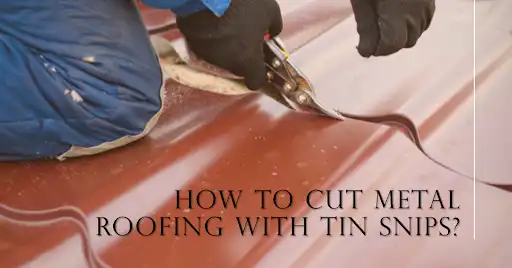
Which Tin Snips will be Ideal for Cutting Metal Roofing

When it comes to cutting metal roofing, choosing the right type of tin snips is crucial for achieving a clean and precise cut. There are three main types of tin snips, each designed for cutting in a specific direction:
Straight-cutting tin snips: These snips are ideal for making straight cuts and are often color-coded with yellow handles. These types of tin or aviation snips are best for short cuts and cutting notches, if you are willing to cut a longer portion then it’ll distort more than the other tin snips.

Left-cutting/ Counter Clockwise tin snips: Identified by their red handles, left-cutting tin snips are designed to make cuts that curve to the left. They are particularly useful when you need to navigate around obstacles or create intricate shapes.

Right-cutting/Clockwise Cutting tin snips: With green handles, right-cutting tin snips are the opposite of left-cutting snips, allowing you to make cuts that curve to the right. They are perfect for cutting around corners or creating curved edges and straight cuts as well.

When selecting tin snips for your metal roofing project, consider the following factors:
- Material thickness: Ensure that the tin snips you choose are capable of cutting through the thickness of your metal roofing material. Some tin snips are designed for lighter gauge metals, while others can handle thicker sheets.
- Comfort and grip: Look for tin snips with ergonomic handles that provide a comfortable and secure grip. This will help reduce hand fatigue and improve your control during the cutting process.
- Blade quality: Start by evaluating the thickness and hardness of your metal roofing. For tough materials, use serrated tin snips (despite cutting marks) with an HRC 65 hardness rating. For thinner sheets, smooth blade tin snips with standard HRC 56 rating sufficiently slice metal. Matching cutting tools to material capabilities enables control and precision when cutting. Choose wisely for clean, efficient metal roofing cuts.
By selecting the appropriate tin snips for your project, you’ll be well-equipped to achieve the desired cuts and ensure a successful metal roofing installation or repair.
Steps for Cutting Metal Roofing with Tin Snips
Step 1 – Mark the Cutting Area
Before you begin cutting your metal roofing, it’s essential to mark the cutting area accurately. This will help ensure a precise and clean cut, minimizing the risk of errors or wasted material. Follow these steps to mark the cutting area:
Measure and mark: Using a measuring tape, determine the desired dimensions of your cut and mark them on the metal roofing sheet using a permanent marker or chalk line. Double-check your measurements to avoid any mistakes.
Use a straightedge: For straight cuts, place a straightedge or ruler along the marked line to serve as a guide for your tin snips. This will help you maintain a straight and even cut throughout the process.
Create a template: If you need to make multiple identical cuts or have a complex shape to cut, consider creating a template out of cardboard or paper. Trace the template onto the metal roofing sheet to ensure consistency and accuracy.
Account for overlaps: If your metal roofing installation requires overlapping sheets, make sure to factor in the necessary overlap allowance when marking your cutting area. This will prevent any gaps or misalignments in the final installation.
By taking the time to mark your cutting area carefully, you’ll set yourself up for success and achieve a more professional-looking result when cutting your metal roofing with tin snips.
Step 2 – Choose the Right Tin Snips
Selecting the appropriate tin snips for your metal roofing project is crucial for achieving clean, precise cuts. As mentioned earlier, there are three main types of tin snips: straight-cutting (yellow handles), left-cutting (red handles), and right-cutting (green handles). Here’s how to choose the right tin snips for your project:
Assess the cutting direction: Determine the direction of the cuts you need to make. For straight cuts along the length of the metal roofing sheet, use straight-cutting tin snips. For cuts that curve to the left or right, use the corresponding left-cutting or right-cutting tin snips.
Consider the material thickness: Check the thickness of your metal roofing material and ensure that the tin snips you choose are capable of cutting through it. Some tin snips are designed for lighter gauge metals, while others can handle thicker sheets. Consult the manufacturer’s guidelines or product specifications to ensure compatibility.
Prioritize comfort and grip: Choose tin snips with ergonomic handles that provide a comfortable and secure grip. This will help reduce hand fatigue and improve your control during the cutting process, resulting in more accurate cuts and a better overall experience.
Check blade quality: Select tin snips with high-quality, sharp blades that can easily slice through the metal roofing material without causing excessive distortion or leaving rough edges. Well-maintained blades will make your cutting tasks more efficient and produce cleaner results.
By choosing the right tin snips for your metal roofing project, you’ll be better equipped to achieve the desired cuts and ensure a successful installation or repair.
Step 3 – Start Cutting on the Flat Part, Not the Ribs
When cutting metal roofing with tin snips, it’s important to start cutting on the flat part of the sheet rather than the raised ribs. This technique will help you achieve cleaner, more precise cuts and minimize the risk of damaging the metal roofing material. Here’s why and how to do it:
Avoid distortion: Cutting directly on the raised ribs can cause the metal to distort or bend, resulting in an uneven cut and potentially compromising the structural integrity of the roofing sheet. By starting your cut on the flat part, you’ll maintain a more stable and controlled cutting process.
Ensure a clean edge: Beginning your cut on the flat part of the metal roofing sheet allows the tin snips to create a cleaner, more precise edge. This is particularly important if you need to overlap or join multiple sheets, as a clean edge will result in a more seamless and professional-looking installation.
Technique for cutting: To start cutting on the flat part, position your tin snips so that one blade is on the flat surface and the other blade is above the raised rib. Begin cutting along the marked line, keeping the lower blade in contact with the flat part of the sheet. As you progress, you can gradually move the tin snips upward to cut through the raised rib.
Cutting through ribs: When you reach a raised rib, continue cutting through it slowly and steadily. Apply gentle pressure to the tin snips to avoid distorting the metal or creating jagged edges. If you encounter resistance, you can slightly angle the tin snips to help them glide through the rib more easily.
By starting your cuts on the flat part of the metal roofing sheet, you’ll achieve cleaner, more accurate results and ensure a more professional-looking installation. This technique, combined with the right tin snips and careful marking, will help you successfully cut metal roofing with confidence.
FAQ
Can I use regular scissors to cut metal roofing?
No, regular scissors are not suitable for cutting metal roofing. Metal roofing materials are too thick and tough for standard scissors, which can lead to damage to both the scissors and the roofing material. Always use tin snips or other specialized tools designed for cutting metal.
How do I maintain my tin snips for optimal performance?
To keep your tin snips in top condition, clean them after each use to remove any metal debris or dust. Apply a light coat of oil to the blades and pivot point to prevent rust and ensure smooth operation. Store them in a dry place to avoid moisture damage.
Can I cut metal roofing with power tools?
Yes, power tools such as electric shears, nibblers, or circular saws with metal-cutting blades can be used to cut metal roofing. However, these tools may be more expensive and require additional safety precautions. Tin snips are a cost-effective and accessible option for most DIY metal roofing projects.
What safety measures should I take when cutting metal roofing?
Always wear protective gloves to avoid cuts from sharp metal edges. Safety glasses are essential to protect your eyes from metal debris. Work in a well-ventilated area, especially if cutting painted or coated metal roofing, to minimize exposure to fumes or dust. Wear hearing protection if using power tools.
How do I ensure a straight cut when using tin snips?
To achieve a straight cut, use a straightedge or ruler as a guide for your tin snips. Place the straightedge along the marked cutting line and keep the blade of the tin snips pressed against it as you cut. This will help you maintain a straight and even cut throughout the process.
Cutting Out
Cutting metal roofing with tin snips is a skill that every DIY enthusiast or homeowner should master. By choosing the right type of tin snips, marking your cutting area accurately, and starting your cuts on the flat part of the metal roofing sheet, you can achieve clean, precise cuts that will result in a professional-looking installation.
Remember to prioritize safety by wearing protective gloves, and safety glasses, and working in a well-ventilated area. With practice and patience, you’ll soon be able to tackle any metal roofing project with confidence and ease.
We hope this guide has provided you with valuable insights and tips for cutting metal roofing with tin snips. If you have any additional questions or need further clarification, feel free to leave a comment below.



